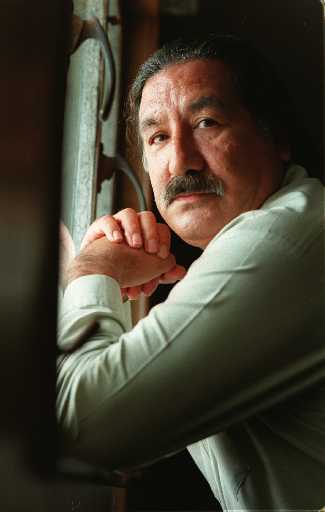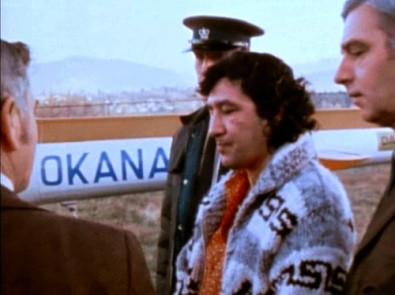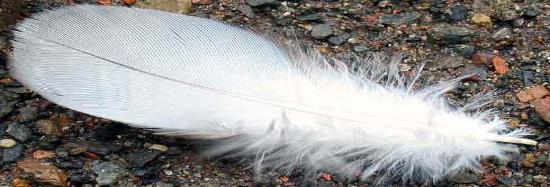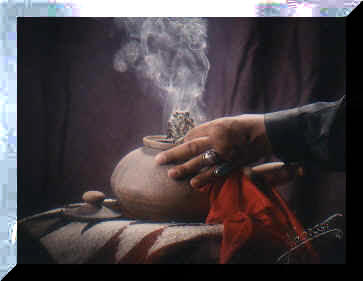Volume 56, Number 18 ·
November 19, 2023The Tragedy of
Leonard Peltier vs. the US
By
Peter Matthiessen
 On
July 27, 2009, I drove west from New York to the old riverside town of
Lewisburg in central Pennsylvania, the site of the federal penitentiary
where early the next morning I would make an appeal to the parole board on
behalf of the American Indian Movement (AIM) activist Leonard Peltier in his
first parole hearing in fifteen years. On this soft summer evening, a quiet
gathering of Peltier supporters from all over the country had convened in a
small park near the Susquehanna River. Despite his long history of defeats
in court, these Indians and whites sharing a makeshift picnic at wood tables
under the trees were optimistic about a favorable outcome. Surely a new era
of justice for minorities and poor people had begun with the Obama
administration, and anyway, wasn't Leonard's freedom all but assured by the
Parole Act of 2005, which mandated release for inmates who had spent thirty
or more years in prison?
On
July 27, 2009, I drove west from New York to the old riverside town of
Lewisburg in central Pennsylvania, the site of the federal penitentiary
where early the next morning I would make an appeal to the parole board on
behalf of the American Indian Movement (AIM) activist Leonard Peltier in his
first parole hearing in fifteen years. On this soft summer evening, a quiet
gathering of Peltier supporters from all over the country had convened in a
small park near the Susquehanna River. Despite his long history of defeats
in court, these Indians and whites sharing a makeshift picnic at wood tables
under the trees were optimistic about a favorable outcome. Surely a new era
of justice for minorities and poor people had begun with the Obama
administration, and anyway, wasn't Leonard's freedom all but assured by the
Parole Act of 2005, which mandated release for inmates who had spent thirty
or more years in prison?
Leonard Peltier, an Ojibwa-Lakota from Turtle
Mountain, North Dakota, was one of the three young Indians who were among
the participants in a shoot-out with the FBI at Oglala on South Dakota's
Pine Ridge Reservation on a hot dusty day in June 1975. They were later
charged with the deaths of FBI agents Jack Coler and Ron Williams.
Ostensibly searching for a suspect in a recent robbery case, the agents had
been warned by tribal police not to enter the property where the AIM Indians
had their camp. Their intrusion apparently provoked a warning that led to an
exchange of gunfire. Understandably outraged by the deaths of Coler and
Williams and in particular by the fact that an unknown "shooter" had
finished off both wounded men at point-blank range, their fellow agents
would also suffer intense frustration and embarrassment when a dozen or more
of the Indians involved, using a brushy culvert under a side road, escaped a
tight cordon of hundreds of agents, Indian and state police, national
guardsmen, and vigilantes who had the area surrounded.
 More
galling still, Bob Robideau and Dino Butler, two of the three AIM suspects
in the killings arrested during the FBI's huge "ResMurs" (Reservation
Murders) investigation, were acquitted a year later in Cedar Rapids, Iowa,
on a plea of self-defense, as the third and last suspect, Leonard Peltier,
would certainly have been as well, had he not fled to Canada. He was
arrested there in February 1976, extradited back to the US, and tried
separately. Though originally indicted with the others on identical
evidence, he was barred by a hostile new judge, Paul Benson, from presenting
the same argument based on self-defense that had led to Robideau and
Butler's acquittal. Furiously prosecuted as the lone killer and convicted
for both deaths on disputed evidence, Peltier was sentenced in February 1977
in Fargo, North Dakota, to two consecutive life terms in federal prison.
More
galling still, Bob Robideau and Dino Butler, two of the three AIM suspects
in the killings arrested during the FBI's huge "ResMurs" (Reservation
Murders) investigation, were acquitted a year later in Cedar Rapids, Iowa,
on a plea of self-defense, as the third and last suspect, Leonard Peltier,
would certainly have been as well, had he not fled to Canada. He was
arrested there in February 1976, extradited back to the US, and tried
separately. Though originally indicted with the others on identical
evidence, he was barred by a hostile new judge, Paul Benson, from presenting
the same argument based on self-defense that had led to Robideau and
Butler's acquittal. Furiously prosecuted as the lone killer and convicted
for both deaths on disputed evidence, Peltier was sentenced in February 1977
in Fargo, North Dakota, to two consecutive life terms in federal prison.
The following year, when Peltier's conviction
was appealed, 8th Circuit Court of Appeals Judge Donald Ross denounced the
coercion of witnesses and manipulation of evidence in his case as "a clear
abuse of the investigative process by the FBI"; the US Attorney's Office,
too, would be sharply criticized for withholding exculpatory evidence. In
October 1984, in an evidentiary hearing in Bismarck, North Dakota, ordered
by the appellate court to review the possibility of a new trial, the
prosecutor, US Attorney Lynn Crooks, had to concede that the FBI's own
laboratory had failed to verify the claimed ballistics link between Peltier
and the murder weapon that was used to nail down his conviction—a shell
casing of disputed provenance that Crooks had called "perhaps the most
important piece of evidence in this case." Even so, Judge Benson refused to
reconsider the conviction.
The following year when the decision was
appealed again, Crooks finally admitted that the identity of "the shooter"
had never been proven and was in fact unknown to the prosecution even when
it was twisting the evidence to ensure Peltier's conviction and make certain
that its third and last suspect—by its own description, "the only one we
got"—was imprisoned for life. Yet the appellate court, while noting that so
much tainted evidence had deprived the defendant of his constitutional right
to due process of law, found "no compelling legal justification" for
ordering a new trial.
In a TV interview after his retirement in
1989, Judge Gerald Heaney, who had signed that astonishing decision, called
it "the most difficult I had to make in twenty-two years on the bench." The
following year, in the National Law Journal, this troubled jurist
held the FBI "equally responsible" for the deaths of its two agents; in a
letter to Senator Daniel Inouye of Hawaii, he urged commutation of Peltier's
sentence. Questioned on the same 1989 TV show about the perjured affidavits
extracted by FBI agents from a frightened alcoholic, US Attorney Crooks
declared: "I don't really know and I don't really care if they were false. I
don't agree that we did anything wrong, but I can tell you, it don't bother
my conscience one whit if we did." Properly outraged by this arrogant
refusal to repudiate US government use of fabricated evidence, Senator
Inouye, as a former US attorney, called Crooks "a disgrace to the
profession."
I first interviewed Leonard Peltier in Marion
Penitentiary in 1981, and that same year, with his original codefendant Bob
Robideau, I inspected the Jumping Bull Ranch at Oglala where the shoot-out
had taken place. Later, after reading many if not most of the pertinent
documents, including the FBI field reports and the transcripts of both
trials, I returned to Oglala to interview local people and study the scene
again. Like the FBI, I would hear all sorts of rumors about the many young
Indians involved without learning which one had fired the fatal shots;
however there seemed to me no doubt whatever that Leonard Peltier had been
railroaded into prison.
Unfortunately my long book making that case[*]
was quickly suppressed by libel suits brought by South Dakota's attorney
general, William Janklow, and an FBI agent named David Price. Eight years
would pass before both suits were summarily dismissed and the book was back
in circulation. Meanwhile Peltier's long fight for a fair trial had won his
endorsement as a political prisoner by Amnesty International, and his
thousands of supporters throughout the world included the Dalai Lama, Nelson
Mandela, Desmond Tutu, and the great majority of his own people in the more
than 250 Indian nations that had formally demanded his release.
In Peltier's first parole hearing in 1996,
the examiner filed an internal recommendation in Peltier's favor. (The US
Parole Commission, like the US Attorney's Office and the FBI, is under the
aegis of the Justice Department: its examiner informs himself about the
case, questions both sides, and appraises the new evidence, if any.) Yet in
actions so belated and irregular as to raise suspicion of undue influence,
the commission replaced that first examiner with one more to its liking and
denied parole.
By then, the few bold lawmakers who had
called for investigations had retreated or retired, and Peltier's best hope
was executive clemency. To that end, I wangled my way into the Oval Office
and pressed my book about the case into President Clinton's hands. In
January 2001, during Clinton's last week in office, as FBI lobbyists—the
Association of Retired FBI Agents and No Parole for Peltier—marched in front
of the White House, I joined attorney Bruce Ellison and filmmaker Jon Kilik
in a long meeting with the presidential and White House counsels in which we
argued that granting clemency to an American Indian who could offer nothing
in return was a bold symbolic step that could only enhance the President's
last-minute efforts to prop up his legacy.
The lawyers seemed impressed and hopes were
high, but when the clemency list appeared on the Saturday morning of
Inauguration Day, Peltier's name was missing. The phone call I dreaded was
put through from Leavenworth Prison in early afternoon. "They didn't give it
to me," mumbled a stunned voice I scarcely recognized—the first time in
twenty years of visits, letters, and telephone conversations that Leonard
Peltier's strong spirit sounded broken. With all court appeals exhausted and
no hope of mercy from the incoming Republican administration, this aging
prisoner was condemned to wait for his next parole hearing in 2009.
In the park in Lewisburg, people agreed that
had the shoot-out victims not been "FBIs," Leonard might never have been
convicted; at the very least, he would have been paroled many years before.
Someone in the park recalled the fear and disruption on the reservations
caused by the FBI's huge ResMurs investigation (which was widely perceived
as the latest chapter in the long history of oppression and revenge against
"the redskins who killed Custer" that had led up to the shoot-out). The
killing that day in June 1975 of a young member of the AIM by a marksman's
bullet in the forehead had gone all but unmentioned, someone said, let alone
investigated by "the Injustice Department," doubtless because "Injuns don't
count." How about Bob Robideau's statement to an FBI man that he had been
"the shooter"? Would the Parole Commission take that into account? And was
it suspicious that Robideau had been found dead last February in Barcelona?
(The official autopsy concluded that he had struck his head in a fall while
suffering a seizure.)
With Peltier's attorney Eric Seitz and the
two other parole advocates —Dr. Thom White Wolf Fassett, a Seneca elder and
United Methodist adviser to Congress on Indian affairs, and an Ojibwa woman
named Cindy Maleterre representing Peltier's Turtle Mountain Reservation—I
went early the next morning to the prison, passing supporters waving "Free
Peltier" signs at the entrance road.
In the hearing room the first to speak were
the two sons of the late agent Jack Coler. After testifying to their
family's great loss, they suggested that if this man facing them today were
to take responsibility and express remorse for those brutal murders he so
stubbornly denies having committed, the Coler family might not protest his
parole. But the three FBI spokesmen and the assistant US attorney who spoke
next were content to repeat the same vilifications and distortions of the
facts that won a conviction back in 1977. Locked long ago into their ResMurs
myth, they insisted that Peltier was still a danger to the public and cited
those provisions in the Parole Act specifying that parole may be denied if
the subject's release might "depreciate the seriousness of the offense" or
"promote disrespect for the law."
In response to the charge that Peltier has
evaded his responsibility for those murders, Eric Seitz countered that the
FBI and the US Attorney's Office have evaded responsibility for their own
illegal tactics in his prosecution. Otherwise Seitz made no attempt to retry
a long historic case in a few minutes, emphasizing instead the prisoner's
exemplary behavior record, serious health problems, and other strong
qualifications for parole under the commission's geriatric and medical
criteria. He reminded Examiner Scott Kubic that in a few weeks, on September
12, when Peltier would turn sixty-five, he would also become eligible for
home detention under the new Second Chance program for elderly inmates
designed to ease overcrowding in the US prisons.
Thom White Wolf testified that Peltier's
incarceration for nearly thirty-three years has been viewed both nationally
and internationally as a gross injustice and a major embarrassment to our
country, with a negative effect on the world's view of how the US government
treats its native population. When my turn came, I spoke to the points made
in this article, adding how much this inmate had matured over the three
decades of our acquaintance, not only as an articulate spokesman for his
people but as an artist, self-taught in the prisons, whose work is admired
through- out the US. And Cindy Maleterre assured the examiner that the
prisoner's Ojibwa-Dakota people at Turtle Mountain—including grandchildren
he has never seen—had already taken care of the parole requirements of
social support, adequate housing, and steady employment (as an
arts-and-crafts teacher and alcoholism counselor on the reservation), and
were planning to welcome him home with a great feast.
That afternoon we left the prison with the
feeling that Examiner Kubic had listened carefully and would recommend
parole—a guarded optimism we conveyed to the flag-waving supporters awaiting
our report on the public road. But no one forgot how the examiner's finding
in Peltier's favor fifteen years before had been aborted; in the next weeks,
as so often in the past, the prisoner would have to suffer the suspense of
desperate hope.
On Friday, August 20, federal inmate
#89637-132 received terse notice that his petition for parole had been
denied: not until his "15-year Reconsideration Hearing in July 2024," he was
informed, would he become eligible to be turned down again. In the unlikely
event that he lives long enough to attend that hearing, Inmate Peltier will
be eighty years old.
In his angry response, Attorney Seitz accused
the commission of "adopting the position of the FBI that anyone who may be
implicated in the killings of its agents should never be paroled and should
be left to die in prison." I entirely agree with Seitz and share his anger.
For the prisoner and his supporters, the Lewisburg hearing had been hollow,
with a predetermined outcome: The United States v. Leonard Peltierhad
always been a matter less of justice than of retribution.
Americans—those
in public office especially—should inform themselves about this painful case
and demand an unbiased investigation that might start with one simple
question: If, in the thirty-three years since his trial, reputable evidence
has ever emerged that Leonard Peltier was the lone killer and deserves to be
in prison for life, why hasn't the Justice Department produced it?
Without public protest, Peltier will not be
granted a fair hearing since his prosecutors know that in the absence of
honest evidence, "the only one we got" would be set free. Instead, this
man's life leaks away behind grim concrete walls for the unworthy purpose of
saving face for the FBI and a US Attorney's Office that together botched the
famous ResMurs case and mean to see somebody pay. And who better for this
fate than a "radical" AIM Indian who dared stand up to "legally constituted
authority" in defense of his humiliated people, as he was doing with such
tragic consequences on that long-ago June day?
In reviewing this case with an open mind, as
surely he must in fulfilling his oath of office, Attorney General Eric
Holder (the assistant attorney general in 2001) might reflect on his own
role in the clemency bestowed by Clinton on Marc Rich, the notorious
"fugitive felon." He might consider, too, Rich's consequent evasion of even
a single day in prison in the harsh light of the eleven thousand days
already served by a penniless American Indian who remains innocent before
the law, having never been proven guilty.
Note:
The Leonard Peltier Defense Offense Committee
points out that "Amnesty International considers Leonard Peltier to be a
political prisoner whose avenues of redress have long been
exhausted....Amnesty International recognizes that a retrial is no longer a
feasible option and believes that Leonard Peltier should be immediately and
unconditionally released."
The LPDOC adds that "Documents show that
although the prosecution and government pointed the finger at Peltier for
shooting FBI agents at close range during the trial in 1976, for three years
the prosecution withheld critical ballistic test results proving that the
fatal bullets could not have come from the gun tied to Leonard Peltier. This
trial also denied evidence of self defense."
The LPDOC further notes that "The U.S.
Prosecutor, during subsequent oral arguments, stated: 'We can't prove who
shot those agents' and the Eighth Circuit found that "There is a possibility
that the jury would have acquitted Leonard Peltier had the records and data
improperly withheld from the defense been available to him in order to
better exploit and reinforce the inconsistencies casting strong doubts upon
the government's case."
Judge Heaney who authored the denial, now
supports Mr. Peltier's release, stating that the FBI used improper tactics
to gain Mr. Peltier's conviction.
In accordance with Title 17
U.S.C. Section 107, this material is distributed without profit to those who
have expressed a prior interest in receiving the included information for
research and educational purposes.
White Eagle Soaring: Dream Dancer of the 7th Fire

Index of DreamCatchers However
You Spell DreamCatcher
However you've spelled Dream Catcher, these REAL Dream Catchers are
natural magic from Creator Direct (Manidoog).
Dream Catcher links
This is a crazy world. What can be
done? Amazingly, we have been mislead. We have been taught that we can
control government by voting. The founder of the Rothschild dynasty, Mayer
Amschel Bauer, told the secret of controlling the government of a nation
over 200 years ago. He said, "Permit me to issue and control the money of
a nation and I care not who makes its laws." Get the picture? Your freedom
hinges first on the nation's banks and money system. That's why we
advocate using the
Liberty Dollar, to understand the
monetary and banking system. Freedom is connected with
Debt Elimination for each individual. Not
only does this end personal debt, it places the people first in line as
creditors to the National Debt ahead of the banks. They don't wish for you
to know this. It has to do with recognizing WHO you really are in
A New Beginning: A Practical Course in Miracles.
You CAN
take
back your power and
stop volunteering to pay taxes to the collection
agency for the BEAST. You can take back that which is yours,
always has been yours and use it to pay off your debts. And you can send
others to these pages to discover what you are discovering.
 Get
a course to promote your business online, explode
your sales
Get
a course to promote your business online, explode
your sales
 Get
software to promote your business online in less time
Get
software to promote your business online in less time
 Get
software to streamline your business and run it hands free.
Get
software to streamline your business and run it hands free.
Dream Catchers
Art and Culture of the Seventh Fire
Dream-Catchers are wisdom-teachers. If you learn to
listen, they will take YOU on a journey of wonder and revelations, too.
Illusions are stripped away and new ways are revealed. The real
Dream-Catchers of the Seventh Fire are
waiting for you. Come into the realm of Real Dream-Catchers. See with eyes of spirit,
listen with your heart and soar with the White Eagle.
Disclaimer: The
statements on www.real-dream-catchers.com have not been evaluated by the FDA.
These dream catchers are not intended to diagnose nor treat nor cure any
disease or illness. Neither are dreamcatchers, the dream catcher, nor any
dreamcatcher.
In accordance with Title 17
U.S.C. Section 107, this material is distributed without profit to those who
have expressed a prior interest in receiving the included information for
research and educational purposes.
© 2007, Allen Aslan Heart / White Eagle Soaring of the Little Shell Pembina Band,
a
Treaty
Tribe of the Ojibwe Nation









 On
July 27, 2009, I drove west from New York to the old riverside town of
Lewisburg in central Pennsylvania, the site of the federal penitentiary
where early the next morning I would make an appeal to the parole board on
behalf of the American Indian Movement (AIM) activist Leonard Peltier in his
first parole hearing in fifteen years. On this soft summer evening, a quiet
gathering of Peltier supporters from all over the country had convened in a
small park near the Susquehanna River. Despite his long history of defeats
in court, these Indians and whites sharing a makeshift picnic at wood tables
under the trees were optimistic about a favorable outcome. Surely a new era
of justice for minorities and poor people had begun with the Obama
administration, and anyway, wasn't Leonard's freedom all but assured by the
Parole Act of 2005, which mandated release for inmates who had spent thirty
or more years in prison?
On
July 27, 2009, I drove west from New York to the old riverside town of
Lewisburg in central Pennsylvania, the site of the federal penitentiary
where early the next morning I would make an appeal to the parole board on
behalf of the American Indian Movement (AIM) activist Leonard Peltier in his
first parole hearing in fifteen years. On this soft summer evening, a quiet
gathering of Peltier supporters from all over the country had convened in a
small park near the Susquehanna River. Despite his long history of defeats
in court, these Indians and whites sharing a makeshift picnic at wood tables
under the trees were optimistic about a favorable outcome. Surely a new era
of justice for minorities and poor people had begun with the Obama
administration, and anyway, wasn't Leonard's freedom all but assured by the
Parole Act of 2005, which mandated release for inmates who had spent thirty
or more years in prison? More
galling still, Bob Robideau and Dino Butler, two of the three AIM suspects
in the killings arrested during the FBI's huge "ResMurs" (Reservation
Murders) investigation, were acquitted a year later in Cedar Rapids, Iowa,
on a plea of self-defense, as the third and last suspect, Leonard Peltier,
would certainly have been as well, had he not fled to Canada. He was
arrested there in February 1976, extradited back to the US, and tried
separately. Though originally indicted with the others on identical
evidence, he was barred by a hostile new judge, Paul Benson, from presenting
the same argument based on self-defense that had led to Robideau and
Butler's acquittal. Furiously prosecuted as the lone killer and convicted
for both deaths on disputed evidence, Peltier was sentenced in February 1977
in Fargo, North Dakota, to two consecutive life terms in federal prison.
More
galling still, Bob Robideau and Dino Butler, two of the three AIM suspects
in the killings arrested during the FBI's huge "ResMurs" (Reservation
Murders) investigation, were acquitted a year later in Cedar Rapids, Iowa,
on a plea of self-defense, as the third and last suspect, Leonard Peltier,
would certainly have been as well, had he not fled to Canada. He was
arrested there in February 1976, extradited back to the US, and tried
separately. Though originally indicted with the others on identical
evidence, he was barred by a hostile new judge, Paul Benson, from presenting
the same argument based on self-defense that had led to Robideau and
Butler's acquittal. Furiously prosecuted as the lone killer and convicted
for both deaths on disputed evidence, Peltier was sentenced in February 1977
in Fargo, North Dakota, to two consecutive life terms in federal prison.
 Get
software to promote your business online in less time
Get
software to promote your business online in less time Get
software to streamline your business and run it hands free.
Get
software to streamline your business and run it hands free.